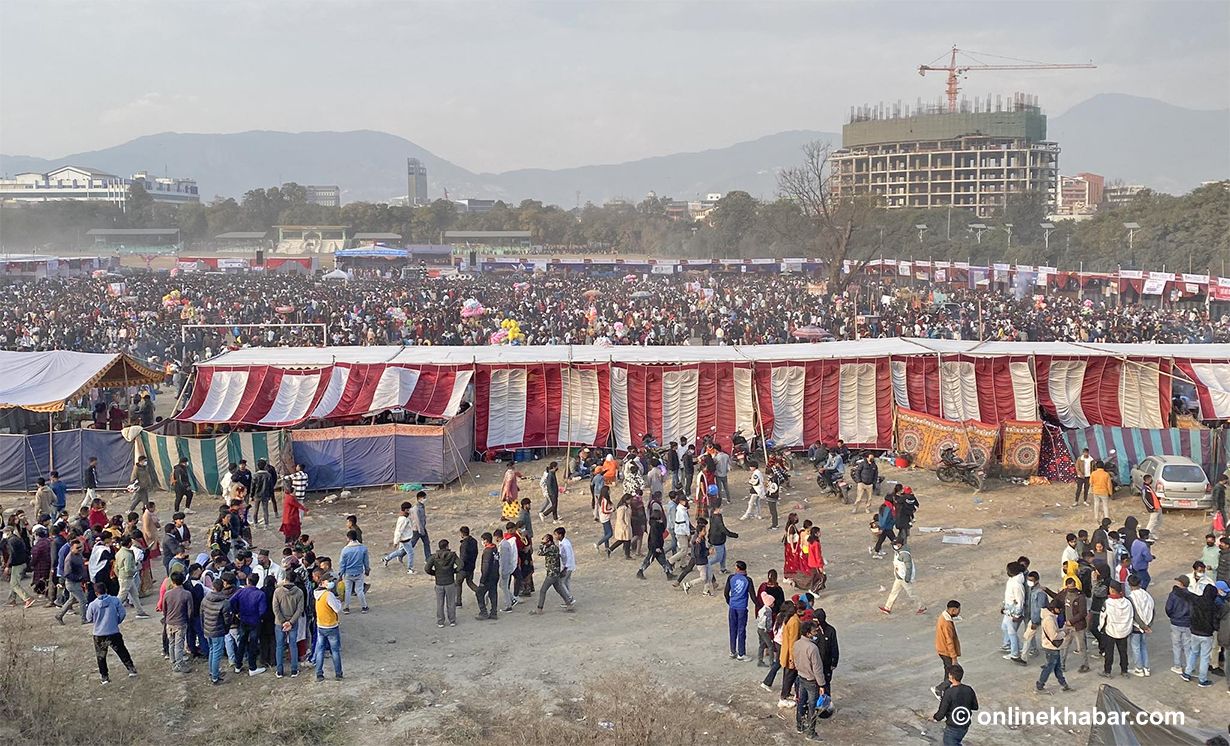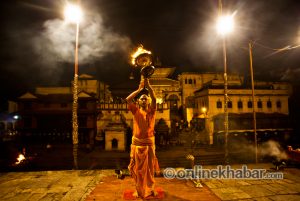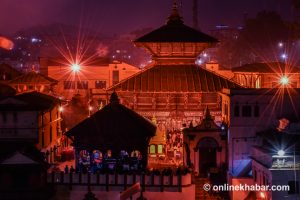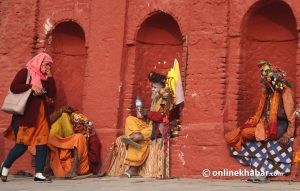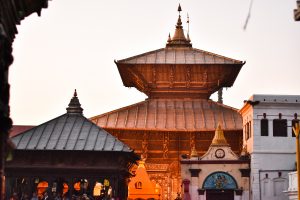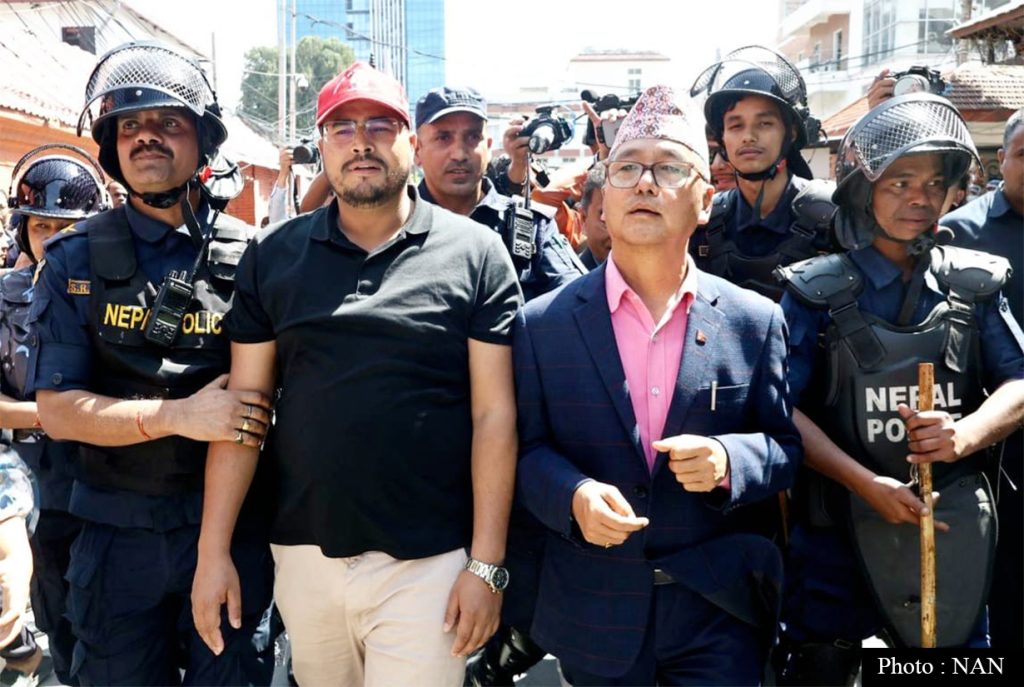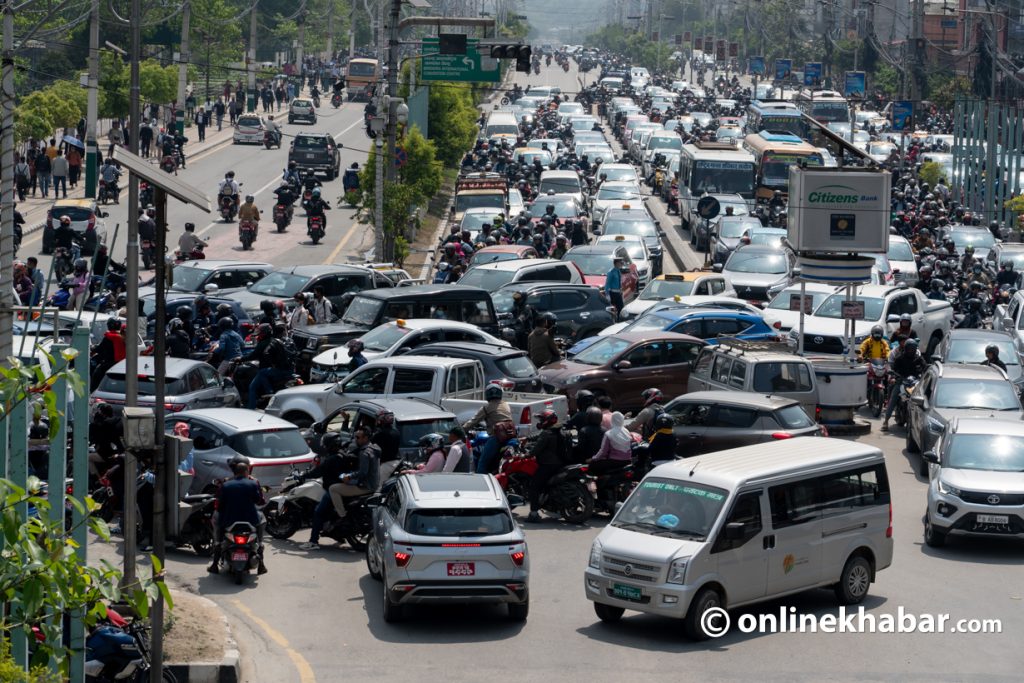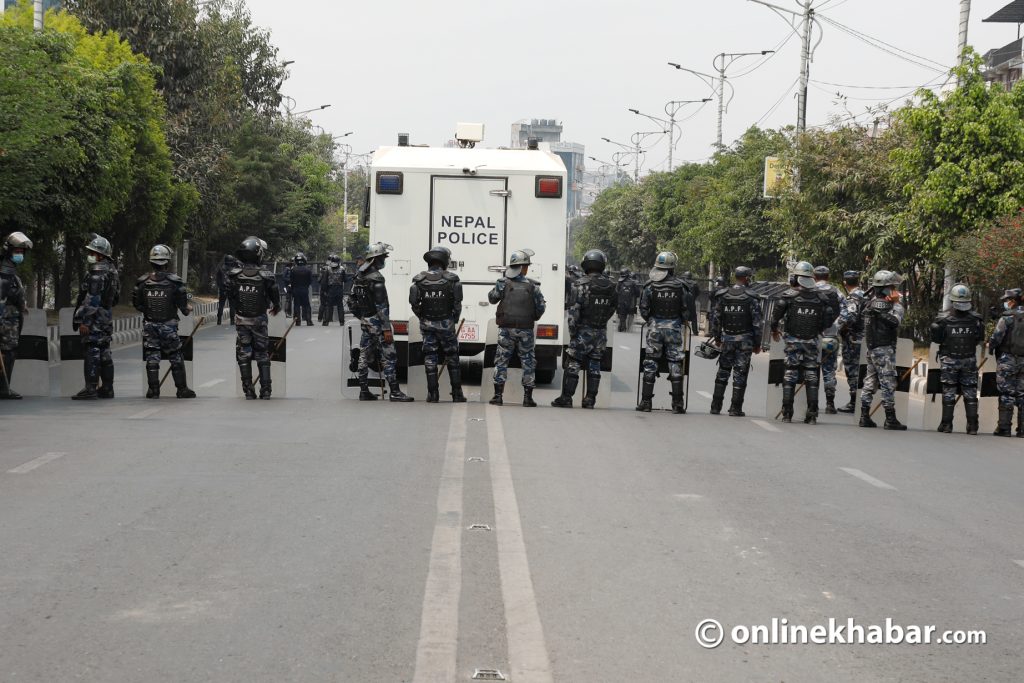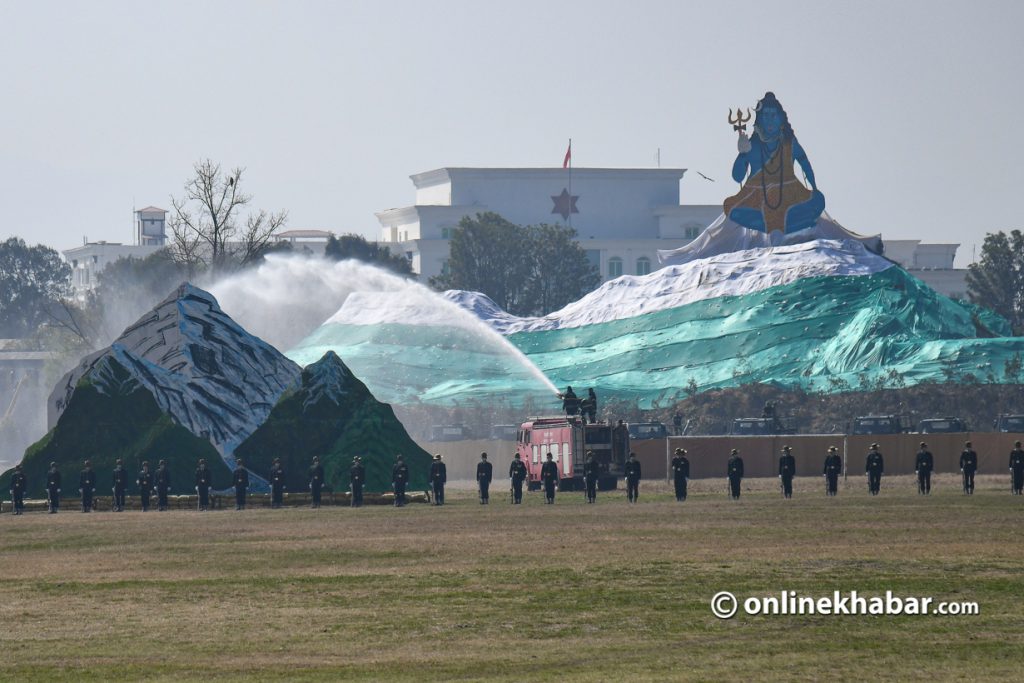
Since weeks before the annual Mahashivaratri festival, a large cutout of Lord Shiva has been installed on the top of a mud mound at the southeast corner of Tundikhel, an open space at the centre of Kathmandu. As the festival approaches, the mound gets decorated with green and white drapes, turning it into a replica of Mount Kailash.
But what is the significance of the gimmick that has been going on for a couple of years now? According to heritage activist and one of the faces behind the Occupy Tundikhel, Ganapati Lal Shrestha, there is none.
“Tundikhel is culturally important for the locals for occasions such as Holi (for Chir Dahan) and Paachahre (for Gurumappa worship). It’s the home of kuldevata (clan gods) for certain families there,” Shrestha says, “But Mahashivaratri has no connection with Tundikhel, as per my knowledge.”
Neither does anyone hold any kind of festival or event on that side of Tundikhel to mark Mahashivaratri per se. So, who is doing it? Why? Is it okay?
How did it start?
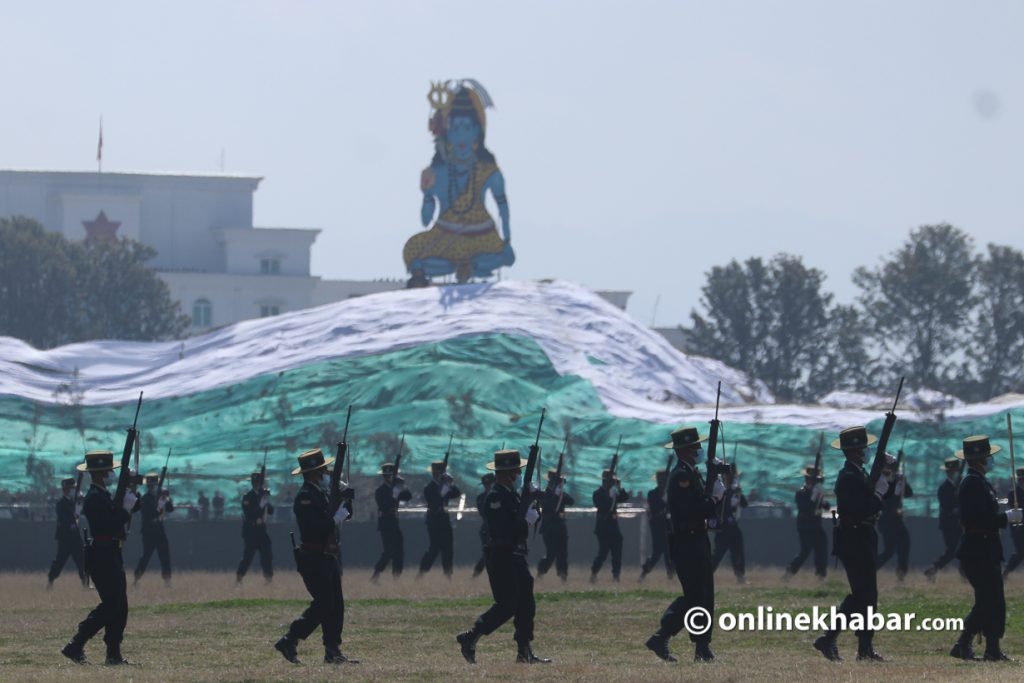
According to a source at the Kathmandu metropolitan city office, it is the Nepal Army that has been turning the mud mound into a makeshift Kailash at Tundikhel on Mahashivaratri, which the institute celebrates as Army Day. The national army institution has been managing Tundikhel for the past few years.
Nepal Army spokesperson Krishna Prasad Bhandari informs the making of the replica of Mount Kailash started being done some three years ago. In doing so, he says, the army has no intention of harming the cultural significance of the historical place.
The gimmick is just a part of the decoration and nothing else, he says. “It is a temporary setting, the display has been set up to commemorate Army Day and Mahashivaratri. It also serves the purpose of covering up the large mud mounds in the background, adding visual aesthetics to the site for the national and international guests or tourists that visit the site on the day.”
“I am unaware of any connection that Tundikhel has to Mahashivaratri, but the army certainly has a long history with the site, and we celebrate the day with gusto here,” he adds.
But, there was no debris that formed the mound before the 2015 earthquake. Even that time, Bhandari says the army used to set up other kinds of cutouts and settings in the background to match the parade and the celebration.
Already a misused space
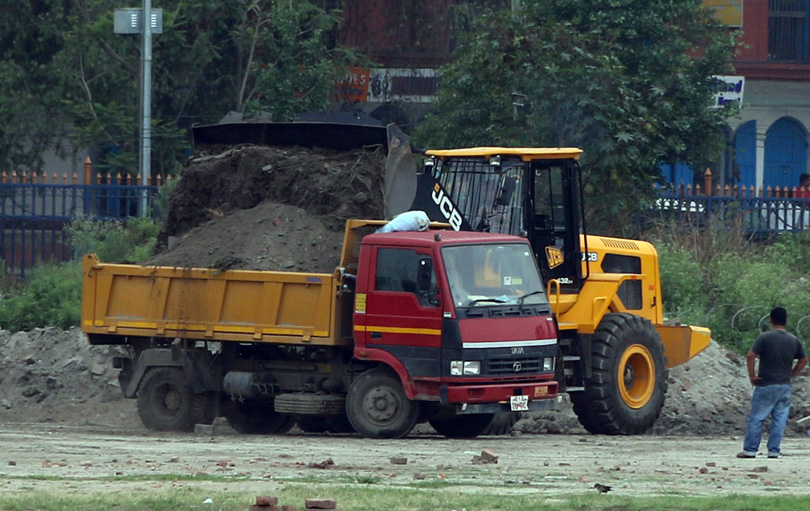
The temporary use of the debris is not a big issue in itself here. But it does raise the question why even after eight years of the 2015 earthquake, the debris still remains dumped at Tundikhel. In 2017, the Department of Archaeology claimed the debris would be cleared in August of that year. Yet, the debris is there to this day.
This has irked activists like Shrestha. He is in favour of removing the debris and getting the open space back for the people.
“We have made a few attempts and requested the Department of Archaeology and the Kathmandu metropolitan city office to relocate the historic remnants of Dharahara from the space, but either there has been no initiative or we lack the right initiative to remove it,” he says, adding that the government has to stop favouring the contractors and think more about freeing the common space.
Shrestha remembers, “Once when we talked to the authorities for the removal, they replied that they would be using the parts of the debris in the reconstruction of the new Dharahara. It seemed reasonable enough for us at that time. But, it was before Covid, and after the pandemic, and no talk whatsoever has been initiated regarding the removal of the debris.”
Meanwhile, reminding about his campaign, Shrestha adds that their petition to leave the only open space in the city unoccupied has also been ignored time and again. “Either in the name of the (army) hospital or bus stop, the open space of the Tundikhel area, which includes Khulamanch, has been encroached on many times now. The public space has been subjected to more festivals and events lately.”
During various celebrations here, the space does not have enough public toilets, and it has been subjected to open defecation too. “And after the event is over, we can all see that the space is left dirty with people leaving their trash taking for granted that the city office will clean the space after them; this is a gross misuse of the space.”
Meanwhile, the city official says it is waiting for the site to clear. “The office had been discussing removing the debris for a while now. On Tuesday, we sent a letter requesting the debris be relocated to a safe place. We are yet to get any response.”







